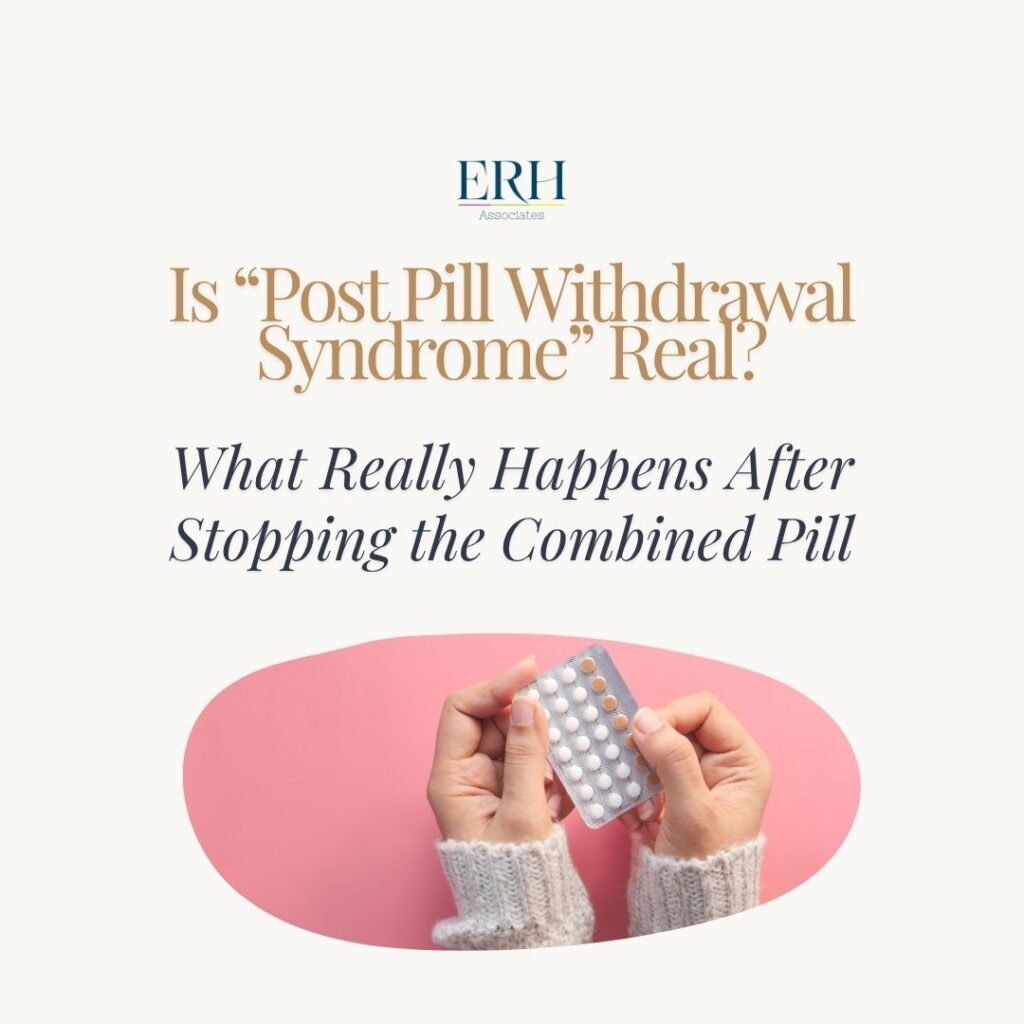There’s growing conversation online about something often called “post-combined contraceptive pill withdrawal syndrome.” While this term isn’t medically recognised, it reflects a very real experience for some women: the transition back to their natural hormonal cycle after stopping the pill.
At ERH Associates, we believe informed transitions are empowered transitions. So let’s break down what’s really happening—and what to expect.
What Happens When You Stop the Combined Pill?
When you’re on the combined oral contraceptive pill (OCP), your estrogen and progestogen levels are kept in a steady state. This hormonal consistency:
- Suppresses natural ovulation
- Prevents the cyclical hormonal fluctuations that cause periods, PMS, and acne
- Offers reliable contraception
But when you stop the pill, your body gradually resumes its natural hormonal rhythm. For some, this return feels smooth. For others, it may bring back symptoms or reveal patterns that were previously masked.
Common Experiences After Stopping the Pill
Everyone’s experience will be different—but here are some common scenarios we see in clinic:
1. Your Natural Menstrual Cycle Returns
The bleeds you had on the pill were withdrawal bleeds—not true periods. Once you stop the pill, your natural cycle kicks in again. This means:
- You’ll ovulate again (unless there’s an underlying issue)
- Your period may come back within a few weeks—or take a bit longer
If you haven’t had a period within three months, we recommend checking in with your GP or specialist. It’s often worth running hormone tests to rule out issues like PCOS or hypothalamic amenorrhoea.
2. Old Symptoms May Resurface
The pill often suppresses symptoms like:
- Painful or heavy periods
- Acne
- PMS or PMDD symptoms (mood swings, irritability, low mood before your period)
Once you stop the pill, those symptoms may return—especially if they were the reason you started the pill in the first place.
3. Cycle Irregularities May Be Unmasked
Because the pill provides predictable monthly bleeds, it can mask underlying issues. After stopping, you may discover:
- Irregular or absent periods
- Symptoms suggestive of polycystic ovary syndrome (PCOS)
- Signs of hormonal imbalance
These issues aren’t caused by the pill—but they may have been hidden by it.
The Pros and Cons of the Combined Pill
We often get asked: Is the pill good or bad?
It’s neither. Like any medical treatment, the combined pill has benefits and risks—and what matters is how it aligns with your health goals.
Benefits of the OCP:
- Highly effective contraception
- Predictable, lighter periods
- Improved acne and PMS symptoms
- Long-term protection against ovarian and endometrial cancers
Possible downsides:
- Slight increase in blood clot risk (especially in smokers or those with family history)
- May worsen migraines or mood in some users
- Can sometimes delay the return of natural cycles
Final Thoughts
“Post-pill withdrawal syndrome” isn’t a formal diagnosis—but the transition off the combined pill can bring changes that catch people off guard.
Here’s what to remember:
- Most women resume their natural cycles within 4–6 weeks
- If your period hasn’t returned after 3 months, seek medical advice
- Old symptoms like acne or PMS may return—but they can be treated in other ways
- The combined pill is a valuable tool with proven benefits, but it’s not the only option
If you’re thinking about coming off the pill—or have recently done so—we’re here to help you understand your options and navigate what comes next with clarity and confidence.

Comments +